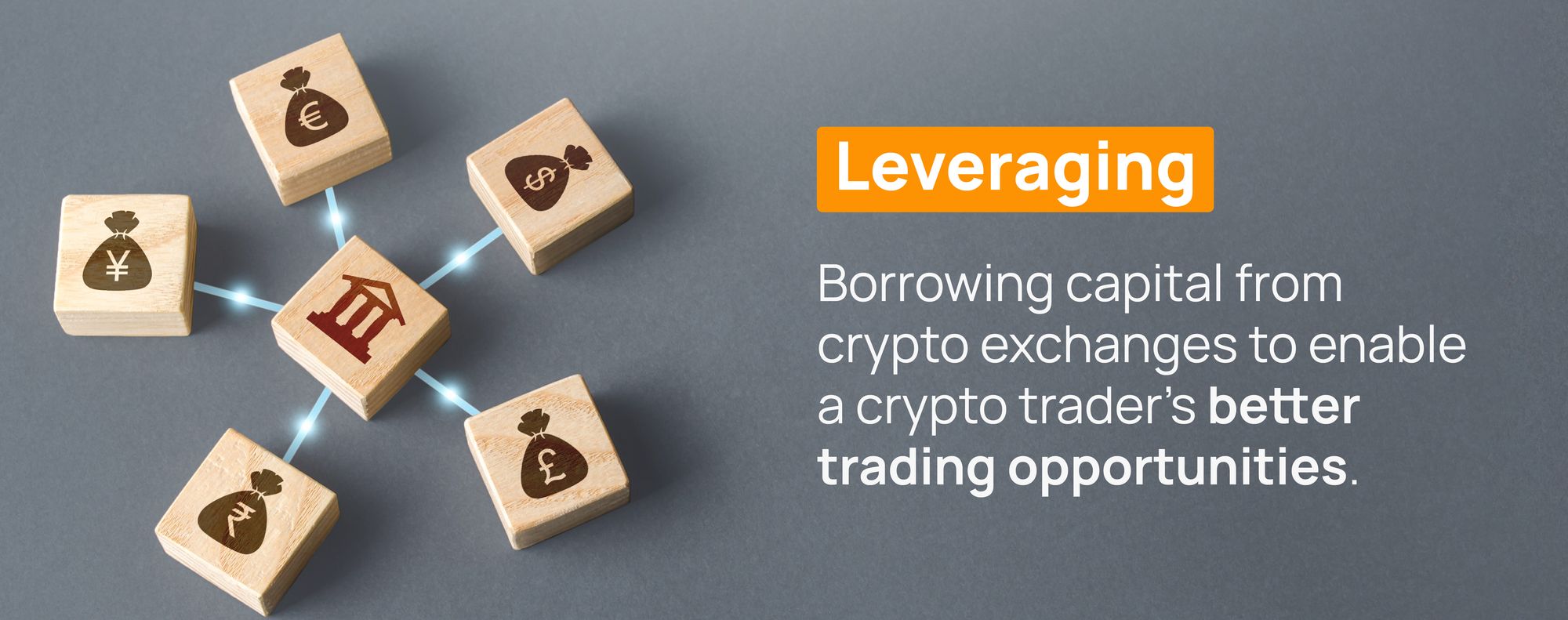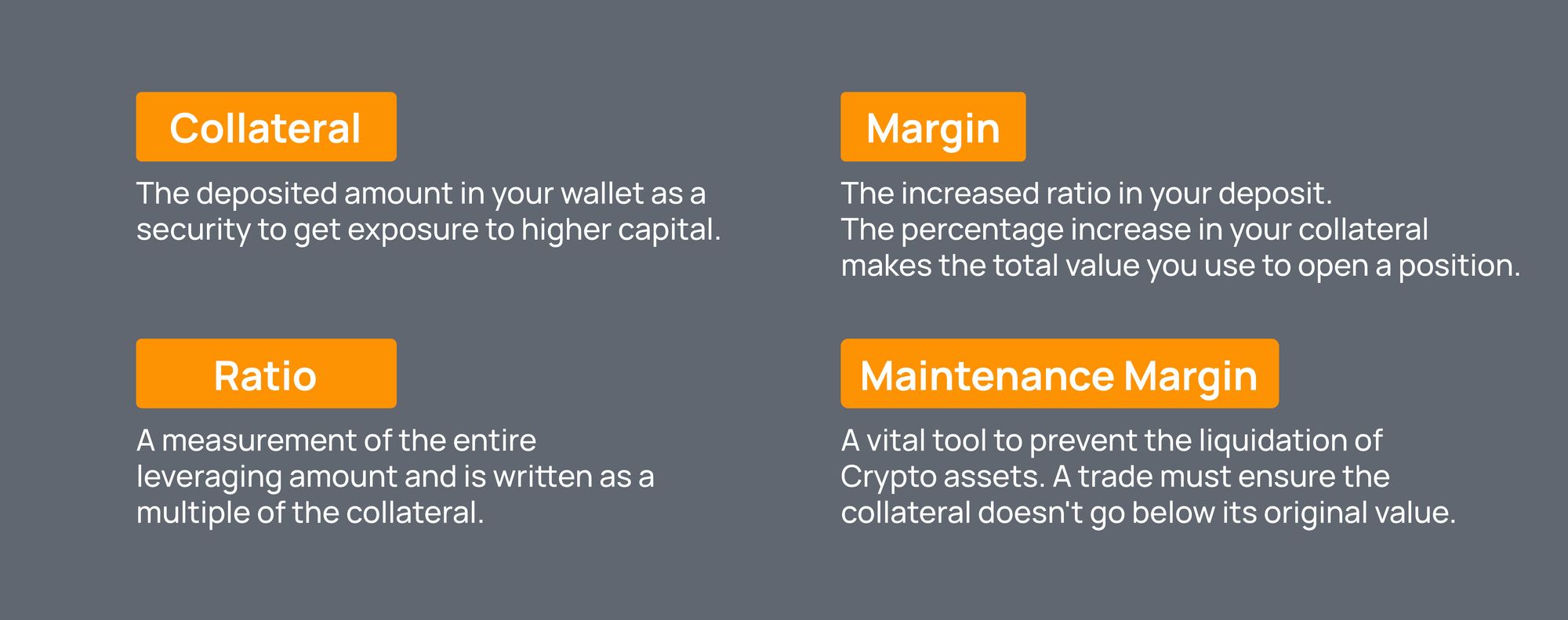What is Leverage in Crypto Trading?

Tackling trading goals with adequate strategies keeps traders on their feet. Successful crypto trading involves efficient planning, trade diversification, regular updates about the market, and good market and trade knowledge.
Crypto trading has advanced so much that almost every strategy and trading options available in traditional assets are also available for cryptocurrency. These trading options and strategies enable crypto traders to transact to the fullest extent, just as they would in a traditional market. One of such methods is leveraging.
What is Leveraging?
Leveraging is borrowing capital from crypto exchanges to enable a crypto trader’s better trading opportunities. It is born from the fact that no matter how good a crypto trader or his strategy is, the return is always proportional to the invested capital. Hence, leveraging allows traders to loan more money from exchange platforms to benefit from more significant capital returns.
Leveraging is usually done by experienced crypto traders that have clear and profound insight into the crypto market. This is because as it has the potential to double returns, it could also leave crypto traders at a loss if not well strategized. Leveraging facilitates trading derivatives such as futures and others.

Basic Terms in Leveraging
Leveraging is a trading term, and as such, it involves using some technical words that mean different things from how they are commonly known. Understanding these terms will enable a better understanding of leveraging. Some of the standard terms used include:
- Collateral: This is the deposited amount in your wallet, and it’s the basic amount you put in your account as a security to get exposure to higher capital. Leveraging is usually as a multiple of the collateral. A trader that opens a position of $6000 on a 1/10 ratio would require a minimum of $600 as a deposit in his account to access this capital needed.
- Ratio: A ratio is a measurement of the entire leveraging amount and is written as a multiple of the collateral. As stated in the previous instance, the ratio is 1:10. This gives us ten times the multiple of collateral, and it’s as simple as described. A ratio is the total leveraged amount expressed as a collateral multiple. The leverage ratio gives better Capital exposure with its multiples and gives traders access to capital that otherwise seems impossible to trade with. A trader opens a trader puts forth. It can either be short or long form. A trader opens a temporary position when the price of crypto assets is expected to fall. A trader opens a long position when he expects an increase.
- Margin: This is the increased ratio in your deposit. The percentage increase in your collateral makes the total value you use to open a position. The previous instance of a trader with just a $600 funded wallet can also be used here. The margin here is the 10% increment, giving us a total of $6000 capital exposure available for trading.
- Maintenance margin: A maintenance margin is a vital tool to prevent the liquidation of Crypto assets. A trade must ensure the collateral doesn't go below its original value. Hence, when the market tides are against his position, he would need to top up his collateral to meet the required amount to avoid liquidation.

Advantages of Leveraging
More considerable capital exposure is the fundamental and most apparent benefit of leverage trading, and it allows traders to benefit from trading more considerable capital without owning them. This will enable traders to diversify their limited resources on different exchange platforms since a bit of collateral as low as $50 might be used to position a leverage trading of about $5000 or more/less, depending on the trading platform and their limitations.
Leveraging is a Double-edged Sword
Any experienced trader would understand this clearly. As sweet as the leveraged deal, focusing only on the pros will signify an impending doom for such traders. The rule of thumb of every trade is the core acceptance of profit and losses as absolute percentages. Notably, the higher the investment/profit, the higher the accompanying risk. As leveraging exposes traders to more effective trading options through incrementing their trading capital, it also leads to higher exposure to losses.
This is why it's necessary to be very rational and logical in leverage trading. A trader might excitedly go for higher leverage ratios to be able to explore more enormous trade benefits. However, the higher the leveraging options are, the higher the chances of liquidation. This is why there's always a limitation on leveraging ratios on most exchange platforms to keep traders in check.
Conclusion: What Matters in Leverage Trading
Adequate knowledge and ample experience are needed. Deep insight makes a good leverage trader position his trading options at the right timing. Utilizing leverage as a quick, ready-to-use capital tool has the power to double the return of a trader exponentially and, at the same time, double losses exponentially. Adding risk management options in leverage trading would be a good idea to hedge disadvantageous price flow.
Trade Crypto on Bit.com
With the mission to create an entire ecosystem for blockchain-based financial transactions, Bit.com stands as the world’s 2nd largest crypto options exchange.
Sign up on Bit.com, and switch on your future.

